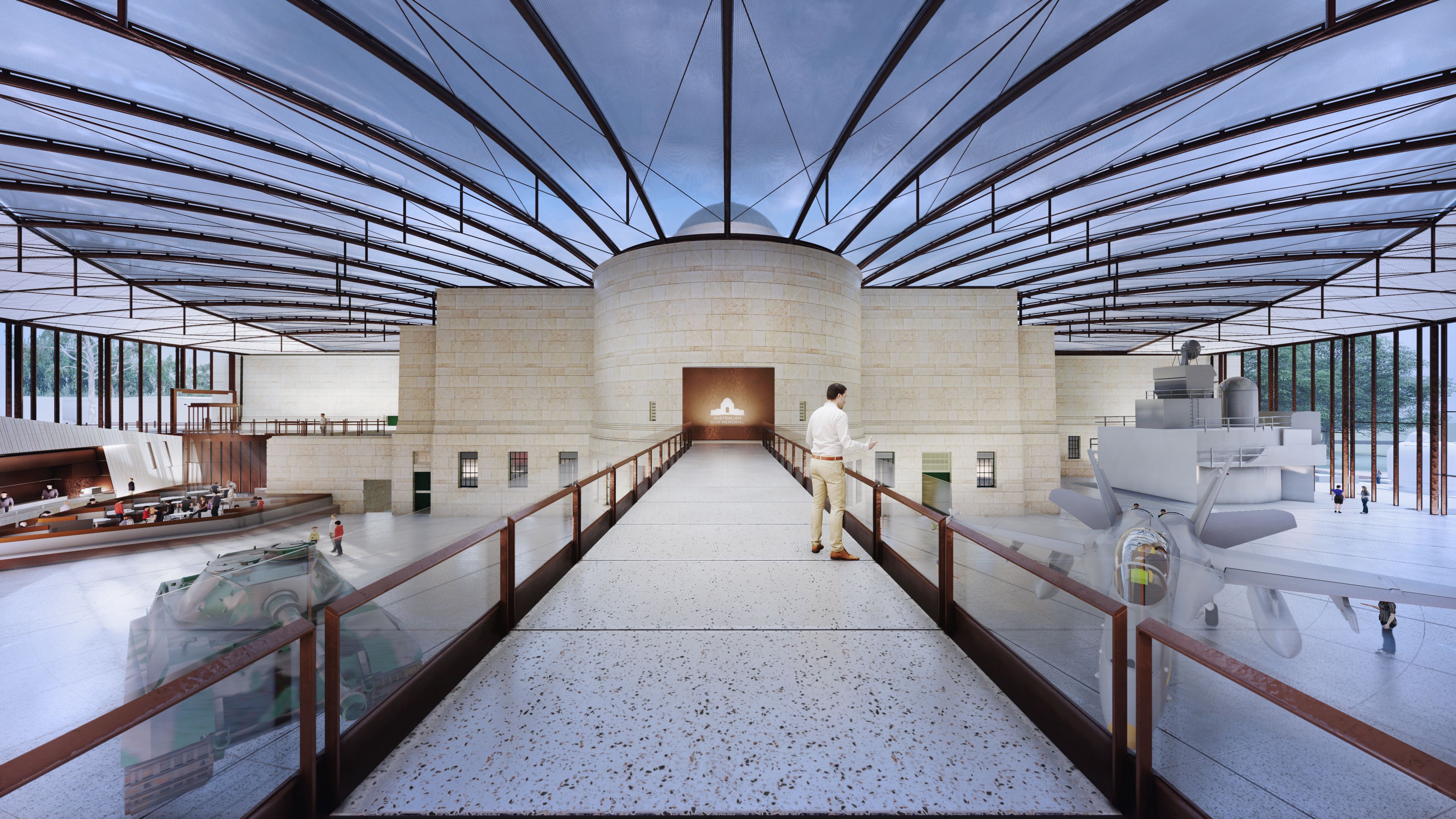The new Anzac Hall and Anzac Atrium, designed by Cox Architecture, will provide an additional 6,500 m2 of gallery space across two levels.
Visitors will have the opportunity to view artefacts from the National Collection that were previously unavailable to the public, including the unique German V2 Rocket and Meillerwagen, C-130 Hercules cockpit, RF-111 and the CH-47D Chinook.
G for George will make its return as the centerpiece for Australians in Bomber Command on the upper level of Anzac Hall. Other exhibits will include:
- the Sydney-Emden battle 1914
- The Battle of Milne Bay
- Sydney Harbour Under Attack and
- Kandahar Workhorse
G for George to return in late 2025
Anzac Hall - Lower Galleries
The lower level will focus on more recent conflicts, highlighting Australia’s commitments to the Middle East, Afghanistan and Australian Peacekeeping operations.
Conflict in the Middle East from 1990
The Conflict in the Middle East from 1990 Gallery will feature more than 500 objects representing Australia’s involvement in conflicts from the first Gulf War of 1990–91 to the Iraq War from 2003, and the fight against ISIS in Northern Iraq and Syria that began in 2014, and maritime operations in the region. The centrepiece of the gallery will be an FA/18A Hornet that served in the Iraq War and the subsequent fight against Islamic State in Northern Iraq and Syria.
War in Afghanistan: 2001 - 2021
The war in Afghanistan was Australia’s longest war. Over a 19-year period, about 26,000 Australian Defence Force personnel served in Afghanistan. 42 of whom lost their lives. The Afghanistan Gallery will feature more than 1,000 objects including Debbie, more formally known as Echo 21 Alpha. It is a Bushmaster that was being driven by Private Matthew Clarke when it suffered an improvised explosive device (IED) attack on 10 July 2012.
Australian Peacekeeping, 1947 - today
The Peacekeeping Gallery will showcase the stories of over 45,000 Australian civilians' police and military personnel who have been deployed since the first mission to the Netherlands East Indies (Indonesia) in 1947. Since then, Australians have participated in more than 60 international peacekeeping operations, in more than 30 countries and disputed zones.
Anzac Atrium and Link Bridge
The Anzac Atrium is the covered area between the main building and Anzac Hall. It will provide additional space for visitor experiences, including a café/restaurant, tour facilitation, and the Memorial’s educational programs.
It will double as a venue for evening functions.
It will also house large technology objects from our collection representing the three services of the Australian Defence Force. The objects will include:
- HMAS Brisbane, a guided missile destroyer (DDG)
- RF-111 A8-134
- Australian Light Armoured Vehicle (ASLAV)
- Black Hawk







